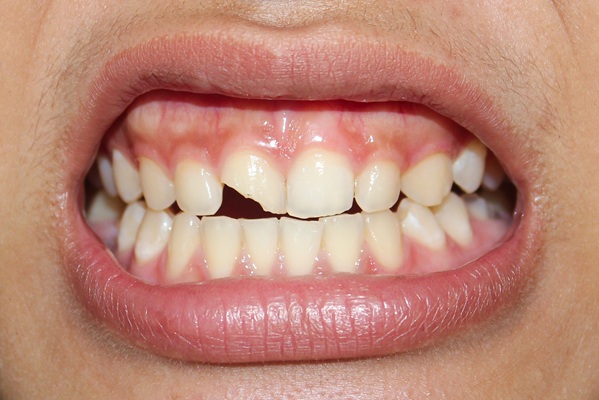Treatment Options for a Chipped Tooth

A chipped tooth, also known as a broken cusp, can be quite a common occurrence, but it is important not to ignore it. Whether it is caused by biting down on something too hard or due to a sports injury, leaving a chipped tooth untreated can result in further complications. Fortunately, many treatment options are available to fix a broken cusp, depending on the severity of the damage. Here we will look closer at some of the most common treatment options for a broken cusp and help you understand which one might be best suited for your needs.
Why you should treat a chipped tooth
A broken cusp might not seem like a major dental issue, but it can cause significant pain and discomfort if left untreated. In fact, a broken cusp can lead to more severe dental problems down the road, including tooth decay, infection, and even tooth loss.
A broken cusp can also affect the appearance of your smile, leading to self-consciousness and embarrassment. Additionally, if the chip is located on a front tooth, it can be challenging to eat, speak, and even breathe properly.
Treating a broken cusp promptly is essential to prevent further complications and ensure your oral health and well-being. You can avoid more severe dental problems and maintain a healthy, beautiful smile by seeking professional dental care.
Treatment options
If you have a broken cusp, various treatment options are available to restore your smile and prevent further damage. A few common options to consider:
Dental bonding
Dental bonding is a cosmetic procedure that uses tooth-colored resin to fill in chips and cracks in your teeth. The resin is applied directly to the damaged area and hardened with a special light. Bonding is a quick and painless option that can be completed in a single visit.
Porcelain veneers
Porcelain veneers could be a better option if you have multiple chips or more significant damage. Veneers are thin, custom-made shells covering the front surface of your teeth to improve their appearance. These can also help protect your teeth from further damage.
Dental crowns
A dental crown is a cap placed over a damaged tooth's entire surface to restore its shape and function. Crowns are typically porcelain, metal, or a combination of both and are a more durable option than dental bonding or veneers.
Root canal therapy
If the chip in your tooth has exposed the sensitive inner pulp, you may need root canal therapy to remove the damaged tissue and protect the tooth from further decay. Root canal therapy involves:
- Removing the damaged pulp
- Cleaning the inside of the tooth
- Filling it with a special material to restore its shape and function
Please note the treatment option that is best for you will depend on the extent of the damage and the location of the broken cusp. Your dentist will be able to assess your situation and recommend the best action to take.
Prevention tips
Preventing a broken cusp is always better than dealing with the aftermath. Some prevention tips to keep your teeth in good shape include:
- Avoid Hard Foods: Avoid biting on hard foods, like ice, hard candy, and popcorn kernels. They can easily chip or break your teeth.
- Wear Mouth Guards: If you play contact sports or grind your teeth, consider wearing a mouth guard to protect your teeth from injury.
- Do not Chew on Objects: Chewing on pens, pencils, or other objects can put unnecessary pressure on your teeth and lead to chipping.
Following these prevention tips can reduce your risk of chipping a tooth and maintain good oral health. However, accidents can still happen, so if you experience a broken cusp, seek treatment immediately to prevent further damage.
Request an appointment here: https://www.sheats-endo.com or call Sheats Endodontic Group at (615) 526-2495 for an appointment in our Nashville office.
Recent Posts
Having a chipped tooth is not something that anyone wants to deal with. It can be problematic because of the treatment required. Additionally, having a chipped tooth can be painful and make it challenging to eat and even speak like normal. Fortunately, there are a plethora of resources that people can use in order to…
Breaking a tooth can be a frightening time for anyone, and not knowing whether to seek emergency dental care for the broken tooth or wait for the regular office to open can add to the stress. The good news is that broken teeth are often resilient and can usually be restored to their normal function,…
Tooth pain relief is often necessary when decay, infection, or trauma affects the inner structure of a tooth. In many cases, root canal therapy is the most effective way to eliminate pain, save the natural tooth, and prevent further complications. This procedure removes infected or damaged pulp, cleans the root canals, and seals the tooth…
When a root canal fails, a root canal retreatment must happen. Getting a root canal treatment is better than a dental extraction. If an endodontist sees that your tooth still has good bone support and healthy gums under or around it, a root canal can save the tooth. A root canal is a less expensive…


